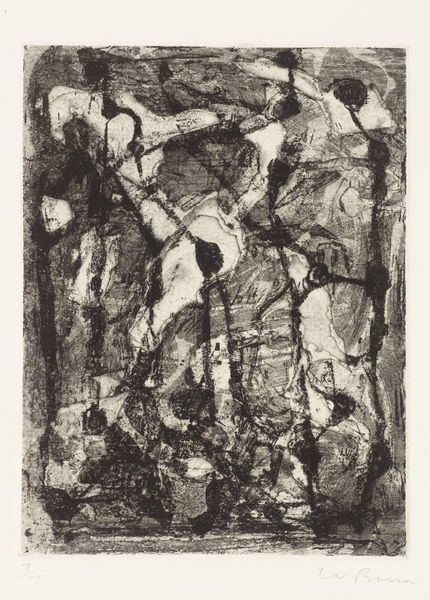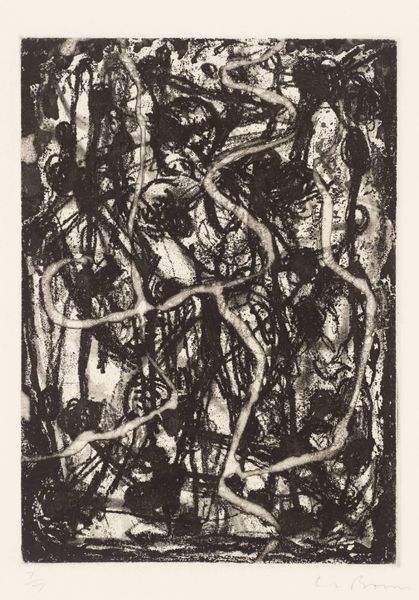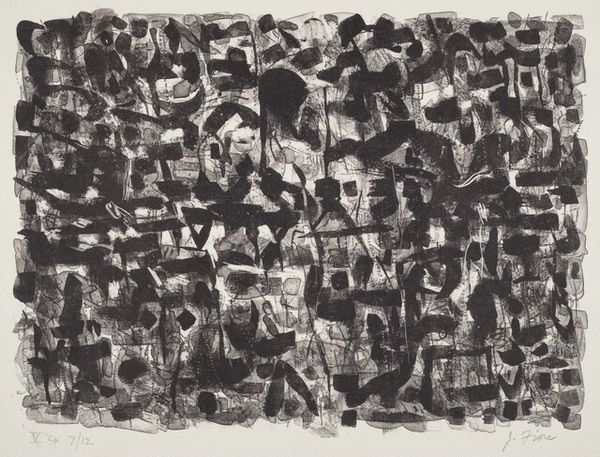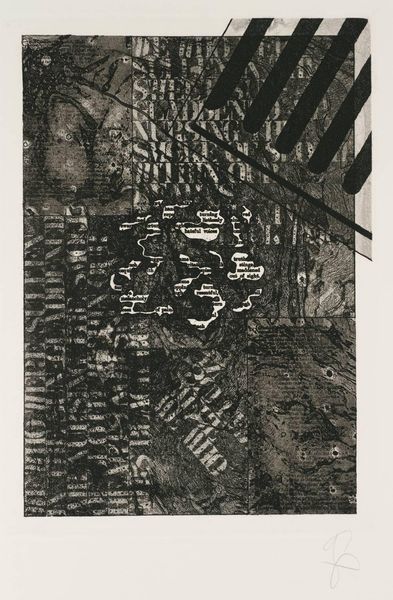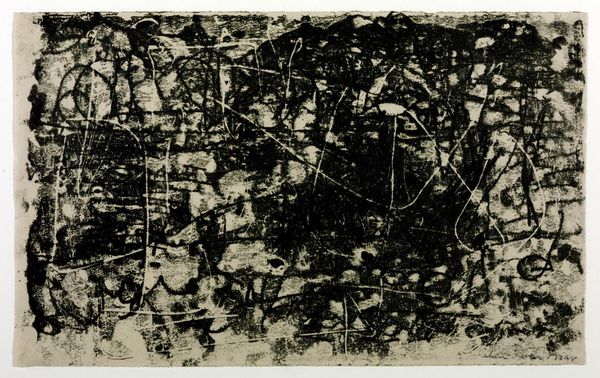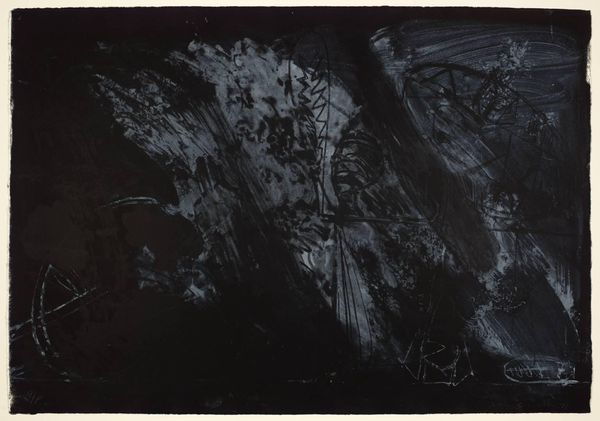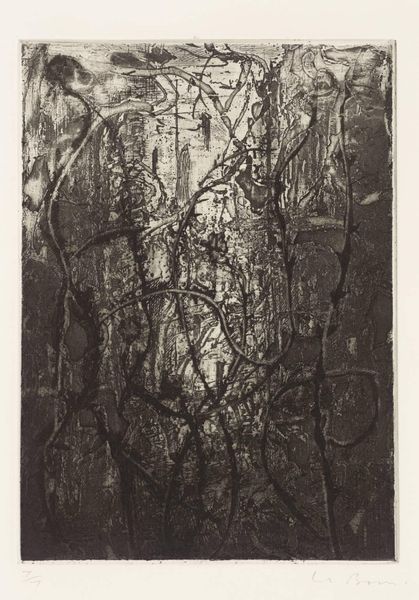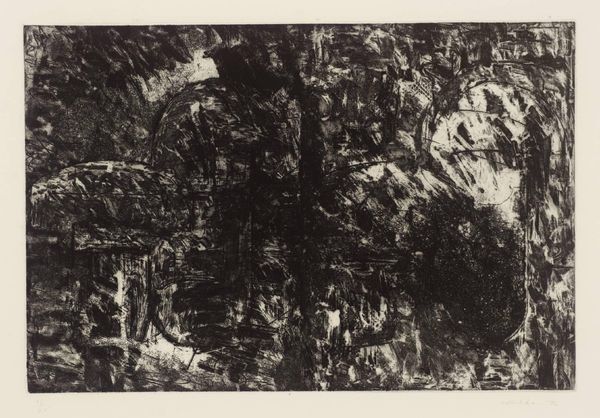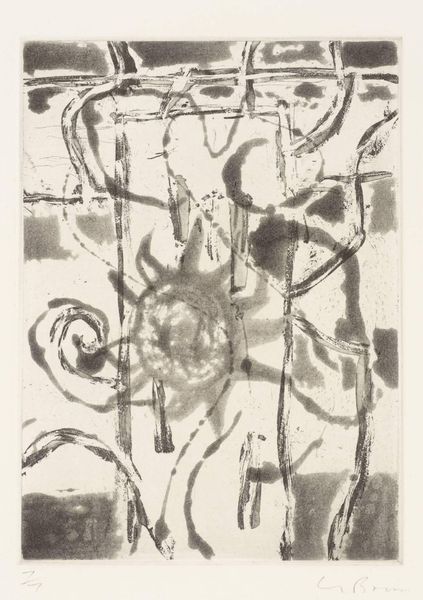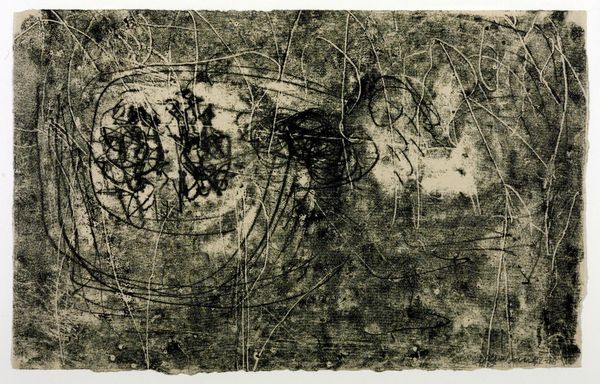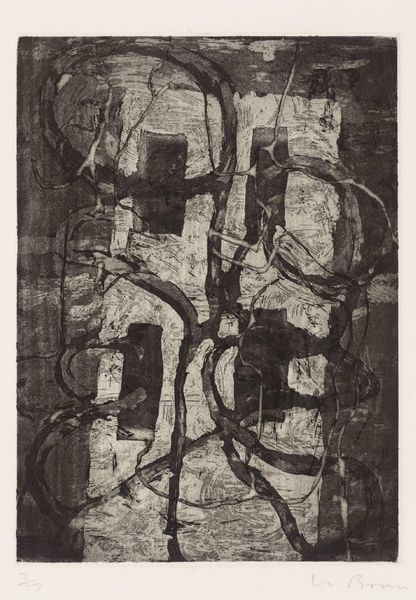
Dimensions: image: 484 x 632 mm
Copyright: © Arnulf Rainer | CC-BY-NC-ND 4.0 DEED, Photo: Tate
Editor: Here we have Arnulf Rainer’s “Waterworld I (The Fallen Rise).” It's undated, but the chaotic energy feels incredibly urgent. What historical contexts might inform our understanding of this piece? Curator: Given Rainer's biography, consider the rise of abstract expressionism post-World War II. The densely layered marks can be viewed as a visceral response to trauma and societal upheaval. How do you see that playing out formally? Editor: The density almost feels suffocating, like the world is collapsing in on itself. Curator: Exactly. This reflects a breakdown of traditional power structures and the rise of anxieties surrounding identity. Considering this, how does the title "The Fallen Rise" challenge conventional narratives of triumph? Editor: It suggests a re-evaluation of who we consider to be powerful or victorious. I never would have thought of all of this without your perspective! Curator: Art is always more than meets the eye, and I feel like your perspective enriched mine as well!
Comments
tate 6 months ago
⋮
http://www.tate.org.uk/art/artworks/rainer-waterworld-i-the-fallen-rise-p77275
Join the conversation
Join millions of artists and users on Artera today and experience the ultimate creative platform.
tate 6 months ago
⋮
A largely self-taught artist, Rainer's earliest works were influenced by Surrealism, and frequently suggest fantastical landscapes. Many of them depict undersea worlds. This lithograph teems with abstracted, biomorphic figures that resemble microscopic organisms. A number of artists at this time were drawing inspiration from magnified photographs of plant or cell life to create works that blurred the distinction between abstraction and representation. Gallery label, September 2004
